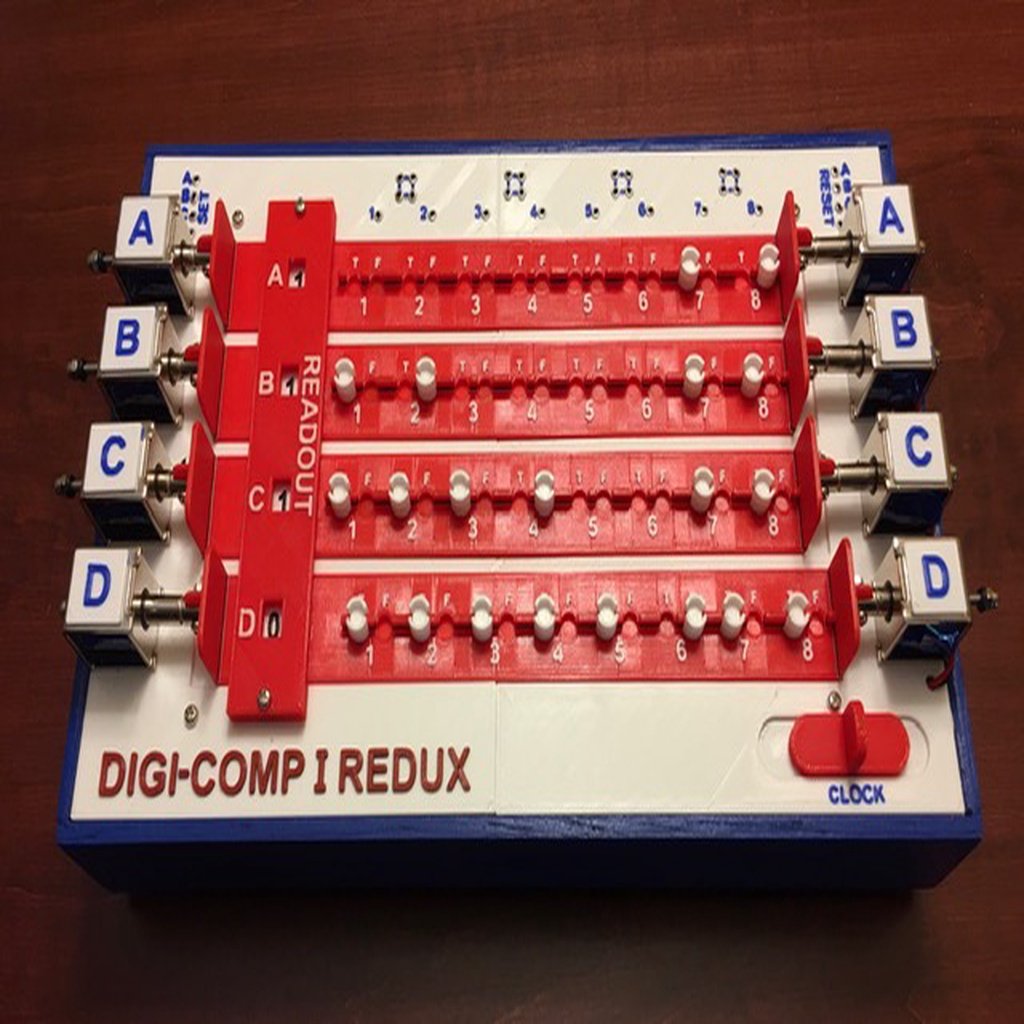
Digi-Comp I Redux
thingiverse
This Thing is my tribute to individuals who promoted computer learning in the 1950's and 60's by marketing simple electric/mechanical "computing" devices. While not considered true computers today, these machines were ingeniously designed, shipped with well-written manuals, and affordable to the average person. Lately, I have been creating replicas of classic "computers". Originals are rare and expensive when they appear on eBay, so most of my replicas were modeled from photos because I couldn't find or afford an original. Today's Thing is a brand new machine that combines elements of the following classics: <table><tbody><tr> <td height="100" width="125"><img src="https://content.instructables.com/FNQ/W6FW/K1QRUGJV/FNQW6FWK1QRUGJV.THUMB.jpg"></td> <td>The Digi-Comp I is the basis for my new design, which uses its mechanics and programming model.</td> </tr> <tr> <td height="100" width="125"><img src="https://cdn.instructables.com/F8I/TP0A/JRYUBCF3/F8ITP0AJRYUBCF3.THUMB.jpg"></td> <td>The look and feel of my new machine came from both the Digi-Comp II replica and the Digi-Comp I.</td> </tr> <tr> <td height="100" width="125"><img src="https://cdn.instructables.com/FK3/4NBA/JWL0TMQS/FK34NBAJWL0TMQS.THUMB.jpg"></td> <td>The Minivac 601's old telephone switchboard patch cord mechanism connects solenoids to the proper logic elements in my new design.</td> </tr> <tr> <td height="100" width="125"><img src="https://cdn.instructables.com/FW6/70GL/JYSZBRTY/FW670GLJYSZBRTY.THUMB.jpg"></td> <td>The GENIAC Redux replica used magnetic reed switches and magnets to implement logic elements, which my new design also uses.</td></tr> </tbody></table> My goal was to create a machine that has the aesthetic of these vintage models. I want people to believe it could have been from the 50's or 60's. Since it's not a replica, I didn't feel limited by the technologies of the era. Here is a short video of Digi-Comp I Redux counting to 16: <iframe allowfullscreen="" frameborder="0" height="315" src="https://www.youtube.com/embed/EURnpaVIK04" width="560"></iframe> Along with this project's STL files and instructions, you'll find a PDF of the manual that came with the original Digi-Comp I. All experiments from this manual can be "programmed" and "executed" on the Digi-Comp I Redux design by following the manual's "coding sheets". This new design adds ONE EXTRA BIT of precision, DOUBLING the numbers that can be expressed from 8 to 16!
With this file you will be able to print Digi-Comp I Redux with your 3D printer. Click on the button and save the file on your computer to work, edit or customize your design. You can also find more 3D designs for printers on Digi-Comp I Redux.
